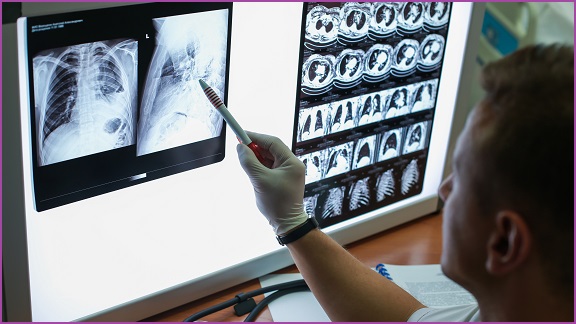The government is putting $1 million toward an AI project that helps doctors learn how to spot signs of COVID-19 in lung scans.
Health Minister, Greg Hunt, said the extra funding will “transform the treatment and management of patients with severe coronavirus”.
The money will be drawn from the Medical Research Future Fund and is going to the developers of a free online AI-powered COVID-19 training platform called CovED which has been built by a team led by Sydney start-up DetectED-X.
Users of CovED can complete short training modules that teach them how to properly identify coronavirus in CT scans of the lungs.
CT scans provide cross-sectional images of lungs and can show the signs of COVID-19 even in early stages of the disease.
“Clinicians, wherever they are in the world, look at real imaging cases that we know the truth of, which have got disease and which hasn’t,” DetectED-X CEO, Professor Patrick Brennan, told The Australian.
“We get them to diagnose, and the algorithm assesses how good they are, which cases were right, assesses their performance and what their weakness was. It identifies each individual error.
“The algorithm then compares what the clinicians thought was abnormal or normal with what the experts thought was abnormal or normal.”
In the two weeks it has been live, the platform has been accessed by medical staff in nearly 80 countries.
CovED was adapted from DetectED-X’s breast cancer assessment training program which at least one study found significantly improved the performance of radiologists.
The ability to quickly train medical staff – who may have limited radiological expertise – in reading CT scans for COVID-19 could help its diagnosis and limit the overall damage of the pandemic.
But Professor Brennan does warn that CovED is not a one-stop shop for coronavirus diagnosis.
“Our platform does not replace expert medical and radiologic training,” he said.
“But CovED provides an effective way to recognise rapidly the appearances of COVID-19, which could be critical in a situation of too many patients and not enough expert radiologists.
“This will be immediately crucial in developing countries, where numbers of radiologists are often insufficient.”
There are nearly two million confirmed cases of COVID-19 in the world, at the time of writing.
More than 115,000 people have died from the disease worldwide.










